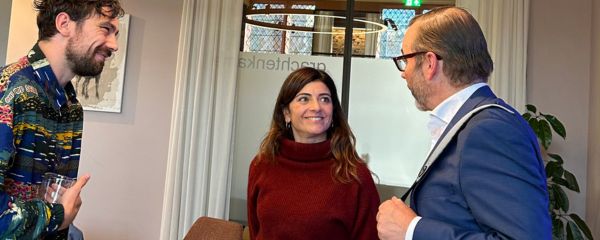
The transition to a sustainable and circular economy: an integrated approach
The transition to a sustainable and circular economy is high on the agenda of both policymakers and businesses. This stems from the urgent need to combat climate change, use resources more efficiently and decouple economic growth from natural resource depletion. But how can these transitions be managed effectively? A key approach is to use a systems approach, such as mission-driven innovation systems and transition management. These frameworks provide tools for understanding and managing complex change. Simona Negro, who specializes in innovation and sustainability transitions, explains below how these processes can be shaped in practice.
What are mission-driven innovation systems?
Mission-driven innovation systems are designed to drive fundamental, structural change in large societal systems such as energy, mobility or food. They do not just focus on incremental improvements, but address complex societal challenges through purposeful innovation. This helps policymakers and other stakeholders understand how innovations can help achieve ambitious societal goals and what interventions are needed to achieve them. These transformations often require long-term efforts, involving different levels of society, from governments and businesses to citizens and civil society organisations.
Sustainability: innovations and transitions
Simona Negro is a researcher on sustainable transitions at Utrecht University. Her research focuses on how innovation policy can contribute to accelerating sustainable transitions. In her work, she emphasises systemic approaches, examining the interaction between technology, policy and society. One of her key insights is that technological innovation alone is not enough; a change in regulations, markets and cultural norms is also needed to realise a circular economy.
In one of her studies, Negro focused on energy supply in the Netherlands. She examined how the energy system can shift to renewable energy sources, such as wind and solar power, and what barriers policymakers need to overcome to accelerate this transition. She stressed that the path to a sustainable energy system requires not only technological innovations, but also institutional reforms. This means addressing vested interests, such as those of fossil energy companies, and creating space for new players.
Circular economy: a new way of thinking
The circular economy is all about reusing raw materials as much as possible and minimising waste. This runs counter to the traditional linear economic model, where raw materials are extracted, used and then thrown away. A circular system requires not only new technologies, such as recycling and reuse methods, but also a fundamental overhaul of the way products are designed, produced and consumed.
Negro’s work emphasises that transitions to a circular economy require broad societal engagement. This means that consumers need to become more aware of their buying and disposing behaviour, but also that companies need to think about new business models. In addition, policy measures are needed that support circular initiatives, such as tax breaks for circular companies and stricter waste management regulations.
The role of mission-driven innovation policy
One of the key insights from Simona Negro’s work is that innovations that contribute to sustainability transitions are often held back by established forces in society. Companies that benefit greatly from the current linear system have little incentive to change. This is where the importance of mission-driven innovation policy emerges. A mission is a clearly defined societal goal, such as reducing CO2 emissions or improving public health, that guides innovation processes. Formulating a mission serves as the dot on the horizon that inspires entrepreneurs, companies, producers and consumers to contribute to the mission with technological or social innovations and solutions.
The government can play a crucial role here by actively removing barriers and supporting pioneers willing to develop new, sustainable business models. This can be done, for instance, through subsidies for sustainable innovation, tax breaks for circular initiatives and regulations that let the external costs of pollution fall back on polluters. In addition, there is a need for so-called niche markets in which innovative companies can experiment and grow without direct competition from established players. At the same time, old structures, institutions and behaviours need to be actively dismantled, as they often act as barriers that block new solutions and maintain the existing, less sustainable system. Breaking this established regime is crucial to create space for scaling up innovations and realising mission-driven goals.
Future prospects: from theory to practice
Mission-driven innovation systems and transition management are powerful frameworks for understanding and managing sustainability transitions. Simona Negro’s work highlights that these processes are complex and multifaceted. Technology is only part of the solution; socio-cultural and institutional changes are equally important. What we need is an integrated approach in which governments, businesses and citizens work together to accelerate the transition to a more sustainable and circular economy.
Conclusion
The transition to a sustainable and circular economy is a complex process that requires an integrated approach, in which technological innovation, policy-making and societal change go hand in hand. Mission-driven innovation systems and transition management provide a valuable framework to guide and accelerate these processes. A systems approach is needed in these processes, paying attention to the dynamic interaction between technological and institutional change. Ultimately, success will depend on how well we manage to coordinate these processes and make the right interventions.
